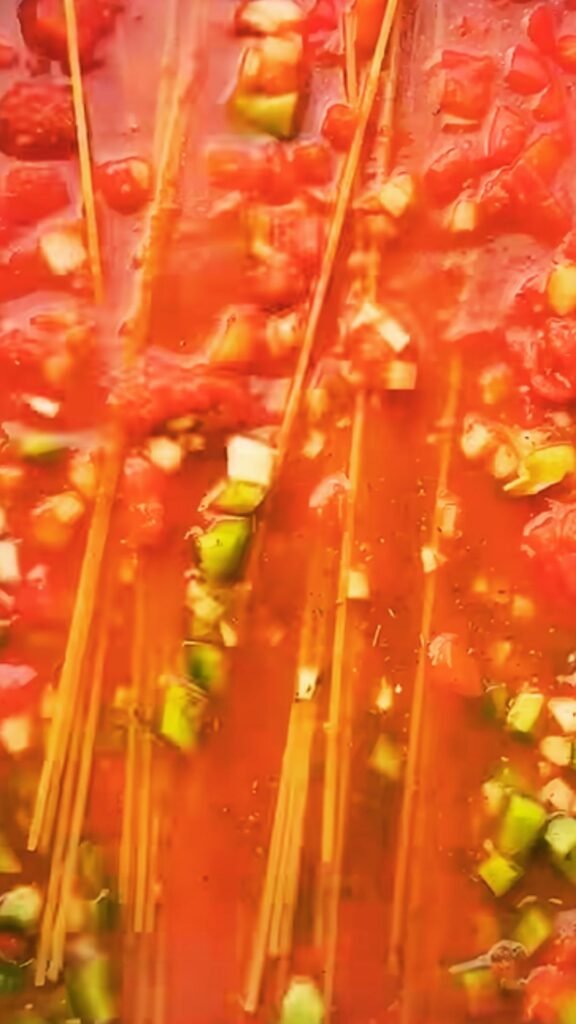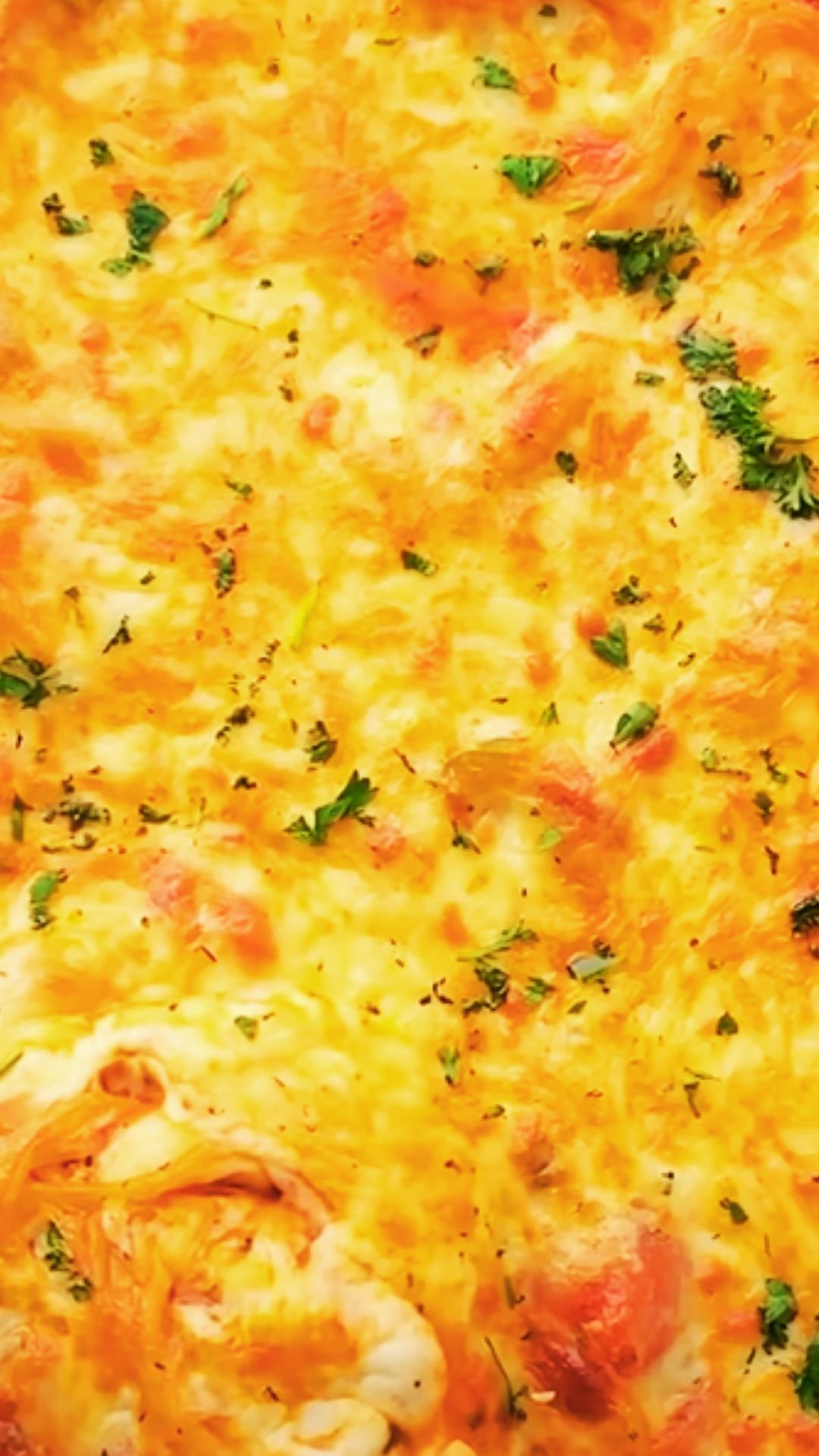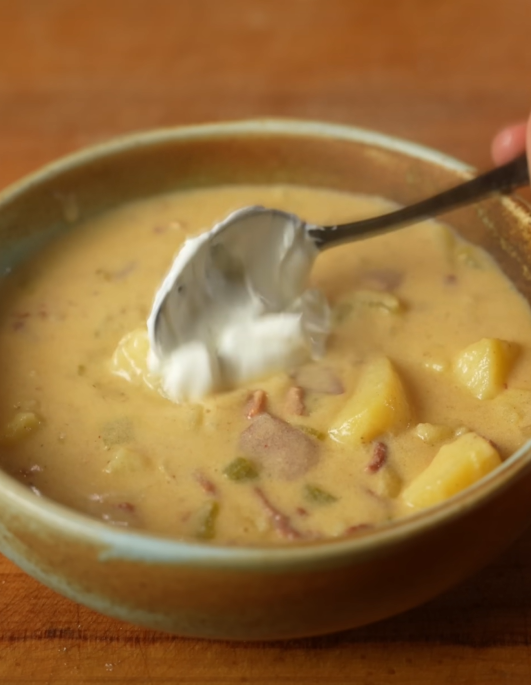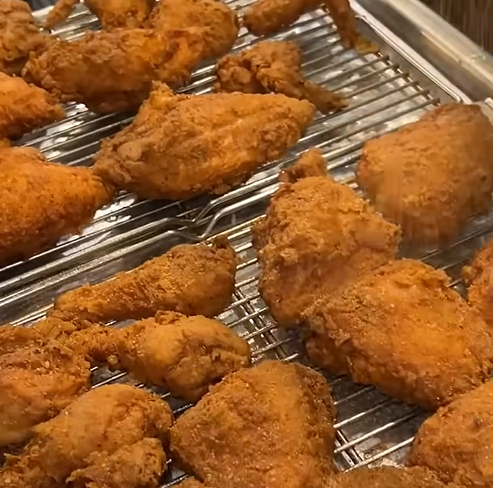There’s something magical about a dish that stops conversations mid-sentence and has everyone reaching for seconds before they’ve even finished their first helping. My honey garlic glazed salmon with roasted vegetables is exactly that kind of showstopper. I’ve served this dish at countless dinner parties, family gatherings, and casual weeknight dinners, and without fail, someone always pulls me aside afterward asking, “Can you please share that recipe?”
The beauty of this dish lies not just in its incredible flavor profile, but in how deceptively simple it is to prepare. The sweet and savory glaze creates a perfect caramelized coating on the salmon, while the medley of colorful roasted vegetables adds both visual appeal and nutritional balance. What makes this recipe truly special is the way each component complements the others, creating a harmonious symphony of flavors that elevates a simple piece of fish into something restaurant-worthy.
I discovered this combination quite by accident during a particularly hectic week when I needed to prepare something impressive for unexpected guests with whatever I had on hand. The result was so spectacular that it immediately became my go-to recipe for any occasion where I want to impress without spending hours in the kitchen.
The Secret Behind the Perfect Glaze
The heart of this dish lies in the honey garlic glaze that transforms ordinary salmon into something extraordinary. I’ve experimented with countless variations over the years, and I’ve discovered that the key to achieving that perfect balance lies in understanding the science behind the ingredients.
Honey: The natural sugars in honey caramelize beautifully under high heat, creating that gorgeous golden-brown finish that makes the salmon look like it came straight from a high-end restaurant kitchen.
Fresh Garlic: I always use fresh garlic rather than powdered because the oils released during cooking create a more complex, aromatic flavor profile.
Soy Sauce: This adds the umami depth that makes the glaze more than just sweet – it provides that savory backbone that keeps people coming back for more.
Rice Vinegar: The subtle acidity brightens the entire dish and prevents the sweetness from becoming overwhelming.
Ginger: Fresh ginger adds a gentle warmth and complexity that elevates the entire flavor profile.
Essential Ingredients and Their Roles
For the Salmon and Glaze
| Ingredient | Quantity | Purpose | Substitution Options |
|---|---|---|---|
| Salmon fillets (skin-on) | 4 pieces (6 oz each) | Main protein | Arctic char, steelhead trout |
| Honey | 1/3 cup | Sweetness and caramelization | Maple syrup, agave nectar |
| Soy sauce (low sodium) | 1/4 cup | Umami and saltiness | Tamari, coconut aminos |
| Fresh garlic | 4 cloves, minced | Aromatic base | Garlic powder (1 tsp) |
| Fresh ginger | 2 tbsp, grated | Warmth and complexity | Ground ginger (1 tsp) |
| Rice vinegar | 2 tbsp | Acidity and balance | Apple cider vinegar |
| Sesame oil | 1 tbsp | Nutty depth | Olive oil |
| Red pepper flakes | 1/2 tsp | Gentle heat | Cayenne pepper (pinch) |
For the Roasted Vegetables
| Ingredient | Quantity | Preparation | Cooking Time |
|---|---|---|---|
| Baby potatoes | 1.5 lbs | Halved | 25-30 minutes |
| Rainbow carrots | 1 lb | Cut diagonally | 20-25 minutes |
| Brussels sprouts | 1 lb | Halved | 15-20 minutes |
| Red bell peppers | 2 large | Cut into strips | 15-20 minutes |
| Red onion | 1 large | Cut into wedges | 20-25 minutes |
| Asparagus | 1 lb | Trimmed | 10-12 minutes |
Step-by-Step Preparation Guide
Preparing the Honey Garlic Glaze
The glaze is where the magic happens, and timing is everything. I always prepare this first because it needs a few minutes to develop its flavors properly.
- Combine the base ingredients: In a medium saucepan, whisk together honey, soy sauce, rice vinegar, and sesame oil until smooth.
- Add aromatics: Stir in minced garlic, grated ginger, and red pepper flakes.
- Cook the glaze: Bring the mixture to a gentle simmer over medium heat, stirring constantly to prevent burning.
- Reduce and thicken: Continue simmering for 8-10 minutes until the glaze reduces by about one-third and coats the back of a spoon.
- Strain (optional): For a smoother finish, strain out the garlic and ginger pieces, though I personally prefer leaving them in for extra texture and flavor.
Preparing the Vegetables
The key to perfectly roasted vegetables is understanding that different vegetables require different cooking times. I use a staggered approach to ensure everything finishes at the same time.
First wave (30 minutes before serving):
- Toss halved baby potatoes with olive oil, salt, pepper, and fresh thyme
- Arrange on one-third of a large sheet pan
- Place in preheated 425°F oven
Second wave (25 minutes before serving):
- Add diagonally cut carrots and red onion wedges to the same pan
- Drizzle with olive oil and season with salt and pepper
Third wave (20 minutes before serving):
- Add halved Brussels sprouts and red bell pepper strips
- Toss everything gently to redistribute
Final wave (12 minutes before serving):
- Add trimmed asparagus spears for the last few minutes
Cooking the Salmon to Perfection
The salmon technique I use ensures a perfectly cooked fillet every time – crispy skin, tender flesh, and that gorgeous caramelized glaze.
- Prepare the salmon: Pat fillets completely dry with paper towels and season both sides with salt and pepper.
- Heat the pan: Use a large oven-safe skillet (cast iron works beautifully) and heat over medium-high heat until shimmering.
- Sear skin-side up: Place salmon skin-side up and cook for 4-5 minutes without moving.
- Flip carefully: Turn salmon over and immediately brush with half the glaze.
- Transfer to oven: Move the skillet to the preheated 425°F oven for 6-8 minutes.
- Final glaze: Remove from oven, brush with remaining glaze, and let rest for 2-3 minutes.
Timing and Temperature Guide
| Component | Temperature | Initial Cook Time | Final Internal Temp |
|---|---|---|---|
| Vegetables | 425°F | 15-30 minutes (staggered) | Tender when pierced |
| Salmon | Medium-high (stovetop) | 4-5 minutes per side | 145°F |
| Salmon (oven finish) | 425°F | 6-8 minutes | 145°F internal |
| Glaze | Medium heat | 8-10 minutes | Coats spoon |

Pro Tips for Restaurant-Quality Results
After making this dish dozens of times, I’ve learned several tricks that make the difference between good and exceptional:
Temperature Control: Use a meat thermometer to ensure your salmon reaches exactly 145°F internal temperature. Overcooked salmon is dry and disappointing, while undercooked salmon can be unsafe.
Glaze Application: Apply the glaze in layers rather than all at once. The first application during cooking helps it adhere and caramelize, while the final brush just before serving adds that glossy, appetizing finish.
Vegetable Sizing: Keep vegetable pieces roughly the same size within each type to ensure even cooking. I cut carrots about 2 inches long, Brussels sprouts in half, and potatoes in similar-sized pieces.
Resting Time: Let the salmon rest for 2-3 minutes after cooking. This allows the juices to redistribute and the glaze to set properly.
Fresh Herbs: Always finish with fresh herbs. I love using chopped green onions, fresh cilantro, or a sprinkle of sesame seeds for both flavor and visual appeal.
Nutritional Benefits and Dietary Considerations
This dish isn’t just delicious – it’s also incredibly nutritious and can be adapted for various dietary needs.
Nutritional Breakdown (Per Serving)
| Nutrient | Amount | % Daily Value | Health Benefits |
|---|---|---|---|
| Protein | 42g | 84% | Muscle maintenance, satiety |
| Omega-3 fatty acids | 2.3g | 143% | Heart and brain health |
| Vitamin A | 680 mcg | 76% | Eye health, immune function |
| Vitamin C | 95mg | 106% | Immune support, collagen |
| Fiber | 8g | 32% | Digestive health |
| Potassium | 1,240mg | 26% | Heart health, blood pressure |
Dietary Adaptations
Gluten-Free: This recipe is naturally gluten-free when using tamari or coconut aminos instead of soy sauce.
Dairy-Free: Already completely dairy-free as written.
Low-Carb: Simply reduce or eliminate the potatoes and increase the green vegetables.
Paleo: Substitute coconut aminos for soy sauce and use coconut oil instead of sesame oil.
Whole30: Use coconut aminos and ensure your honey is compliant (or substitute with approved sweeteners).
Serving Suggestions and Presentation
The way you present this dish can transform it from a simple dinner to an impressive feast that looks like it came from a professional kitchen.
Plating Technique: I arrange the roasted vegetables on one side of the plate, creating a colorful backdrop. The glazed salmon goes on top, slightly overlapping the vegetables. A final drizzle of any remaining glaze around the plate adds professional polish.
Garnish Options:
- Thinly sliced green onions for color and mild onion flavor
- Toasted sesame seeds for crunch and visual interest
- Fresh cilantro leaves for brightness
- Lemon wedges for guests who want extra acidity
- Microgreens for an upscale restaurant appearance
Side Dish Pairings:
- Coconut jasmine rice to soak up the delicious glaze
- Quinoa pilaf for added protein and fiber
- Cauliflower rice for a low-carb option
- Fresh spinach salad with sesame dressing
- Steamed edamame as an appetizer
Make-Ahead and Storage Tips
One of the reasons I love this recipe is how well it adapts to busy schedules. Here’s how to maximize your prep efficiency:
Day Before:
- Prepare the glaze and store covered in the refrigerator
- Cut all vegetables and store in the refrigerator in separate containers
- Season salmon and store covered in the refrigerator
Day Of:
- Remove salmon from refrigerator 30 minutes before cooking
- Reheat glaze gently before using
- Start roasting vegetables first, then begin salmon preparation
Storage:
- Leftover salmon keeps for 2-3 days in the refrigerator
- Leftover vegetables can be repurposed in grain bowls or salads
- The glaze keeps for up to one week refrigerated
Troubleshooting Common Issues
Even with the best recipes, sometimes things don’t go according to plan. Here are solutions to the most common problems I’ve encountered:
Glaze Too Thick: Add a tablespoon of water or rice vinegar and whisk until smooth.
Glaze Too Thin: Continue simmering until it reduces further, or whisk in a small amount of cornstarch slurry.
Salmon Sticking to Pan: Ensure your pan is properly preheated and the salmon is completely dry before cooking.
Vegetables Cooking Unevenly: Cut pieces more uniformly and use the staggered timing method I outlined.
Glaze Burning: Reduce heat and stir more frequently. If it does burn, start over – there’s no saving a burnt glaze.
Seasonal Variations
While this recipe is perfect as written, I love adapting it throughout the year based on what’s fresh and in season:
Spring: Add fresh peas and baby artichokes to the vegetable mix.
Summer: Include zucchini, yellow squash, and cherry tomatoes.
Fall: Incorporate butternut squash cubes and fresh cranberries.
Winter: Add parsnips, sweet potatoes, and dried cranberries.
Questions and Answers
Q: Can I use frozen salmon for this recipe? A: Yes, but make sure to thaw it completely and pat it very dry before seasoning. Frozen salmon tends to release more moisture during cooking, which can prevent proper searing.
Q: What’s the best way to know when the salmon is done? A: The salmon should flake easily with a fork and reach an internal temperature of 145°F. The flesh should be opaque throughout but still moist. If you’re unsure, it’s better to slightly undercook than overcook.
Q: Can I make this recipe on a grill instead of in the oven? A: Absolutely! Use a cedar plank or heavy-duty foil for the salmon, and grill the vegetables in a grill basket. The cooking times will be similar, but watch carefully to prevent burning.
Q: How do I prevent the honey from burning during cooking? A: Keep the heat at medium or medium-low when making the glaze, and stir constantly. If you notice it starting to smoke or smell burnt, remove it from heat immediately and reduce the temperature.
Q: Can I substitute other types of fish for the salmon? A: Yes! This glaze works beautifully with arctic char, steelhead trout, or even thick white fish fillets like halibut or cod. Adjust cooking times based on the thickness of your fillets.
Q: What if I don’t have sesame oil? A: You can substitute with olive oil, though you’ll lose some of the nutty flavor. Alternatively, sprinkle toasted sesame seeds over the finished dish for similar flavor.
Q: How far ahead can I make the glaze? A: The glaze can be made up to one week ahead and stored in the refrigerator. Just reheat gently before using, and you might need to thin it with a little water if it becomes too thick.
Q: My vegetables always seem to come out soggy. What am I doing wrong? A: Make sure your oven is fully preheated to 425°F, don’t overcrowd the pan (use two pans if necessary), and avoid covering the vegetables with foil. Also, pat vegetables dry after washing and before tossing with oil.
Q: Can I use this glaze on other proteins? A: Definitely! This glaze is fantastic on chicken thighs, pork tenderloin, or even tofu for vegetarian options. Adjust cooking times accordingly based on your protein choice.
Q: What’s the secret to getting that restaurant-quality caramelization on the salmon? A: The key is starting with a very hot pan, making sure the salmon is completely dry, and not moving it too soon. Let it develop that golden crust before flipping, and finish with the glaze in the oven for even caramelization.
This honey garlic glazed salmon with roasted vegetables has become my signature dish for good reason. It combines impressive presentation with approachable technique, making it perfect for both novice and experienced home cooks. The balance of sweet and savory flavors, combined with the nutritional benefits and visual appeal, creates a meal that satisfies on every level.
Every time I serve this dish, I’m reminded of why it has become such a requested recipe among my family and friends. It represents everything I love about cooking: bringing people together over delicious food that nourishes both body and soul. The fact that it looks and tastes like restaurant fare while being completely achievable in a home kitchen makes it even more special.
I encourage you to make this recipe your own by experimenting with different vegetables based on the season or your family’s preferences. The basic technique and glaze remain constant, but the supporting cast can change to keep the dish fresh and exciting. Most importantly, don’t be surprised when your guests start asking for the recipe – it’s practically inevitable!



